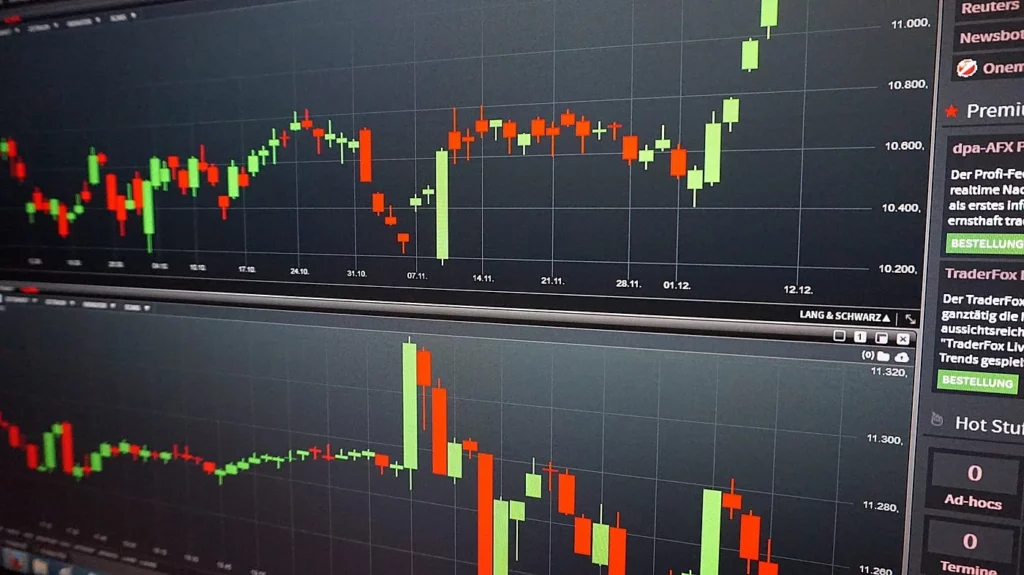What Are Capital Markets?
Savings and investments are transferred between suppliers and those in need on capital markets. Suppliers, who can lend money or make investments, often comprise banks and investors. In this market, corporations, governments, and individuals are looking for capital. Primary and secondary markets make up capital markets. The stock market and the bond market are the two most popular capital markets. By connecting suppliers with people looking for money and providing a platform where they may trade securities, they aim to increase transactional efficiency.

Understanding Capital Markets
The phrase “capital market” is a general one that refers to both physical and virtual locations where diverse entities trade various kinds of financial products. The stock market, bond market, currency and foreign exchange (forex) markets, among others, may be among these venues. Major financial cities like New York, London, Singapore, and Hong Kong are where the majority of markets are concentrated.
Suppliers and consumers of funds make up capital markets. Households, as well as organizations like pension and retirement funds, life insurance firms, charity foundations, and non-financial businesses that have surplus income, are suppliers (through the savings accounts they hold with banks).
Financial items like stocks and debt securities are generally sold on capital markets. Stocks, or “equities,” are ownership interests in a firm. Bonds and other debt securities are interest-bearing IOUs.
There are two distinct groups into which these markets fall:
Primary markets where investors can purchase fresh equity stock and bond issues
Secondary markets for existing securities trading
Primary VS Secondary Markets
Primary Market
In the primary capital market, a corporation offers new stocks or bonds for the first time to the general public, as in an initial public offering (IPO). The new issues market is another name for this marketplace. The company that provides the securities employs an underwriting firm to review it and produce a prospectus explaining the pricing and other features of the securities to be issued when investors purchase securities on the primary capital market.
On the primary market, there are strict regulations that apply to all issues. Companies are required to file reports with the Securities and Exchange Commission (SEC) and other securities organizations, and they must hold off on becoming public until their filings have been authorized.
Because the company and its investment bankers need to quickly sell all of the available securities to reach the required volume, they frequently restrict access to the primary market for small investors and instead concentrate on marketing the sale to institutional buyers who can purchase larger quantities of securities at once. Investment bankers and the company’s management may travel to meet with potential investors and persuade them of the worth of the security being issued as part of a roadshow or dog and pony show for the purpose of marketing the sale to investors.
Secondary Market
These previously issued securities are traded between investors in the secondary market, which consists of places governed by regulatory bodies like the SEC. Companies that issue securities have no involvement in the secondary market. Examples of secondary markets include Nasdaq and the New York Stock Exchange.
The auction market and the dealer market are the two distinct subcategories of the secondary market. The open outcry system, where buyers and sellers gather in one place and declare the prices at which they are willing to purchase and sell their securities, is unique to the auction market. One such instance is the NYSE. However, in dealer markets, commerce occurs across electronic networks. The majority of small investors transact on dealer markets.
Are Capital Markets the Same as Financial Markets?
Although there is frequently a considerable deal of overlap, there are some key differences between these two phrases. Financial markets, which are frequently secondary markets, include a wide range of locations where people and organizations exchange assets, securities, and contracts. On the other side, capital markets are largely used to raise funds, typically for a company, to be employed in operations or for growth.
Which Markets Do Firms Use to Raise Capital?
Companies that need to acquire equity capital can look for private placements from angel or venture capital investors, but an IPO—when shares are initially listed publicly on the stock market—allows them to raise the most money. Bank loans and bonds market-issued securities are two ways to raise debt financing.
The financial sector’s capital markets are a crucial component. They connect those who have money to give and those who need it for their own needs. This might apply to organizations that want to grow, governments that want to finance infrastructure projects, and even private citizens who want to purchase a home. They are separated into two groups: the main market, where businesses list new issues for the first time, and the secondary market, where investors can buy securities that have already been issued. The main advantage of these marketplaces is that they enable the transfer of wealth from those who possess it to others who require it for personal needs.
FOR MORE INFO CLICK THIS SITE:https://learningsharks.in/
FOLLOW OUR PAGE:https://www.instagram.com/learningsharks/?hl=en
